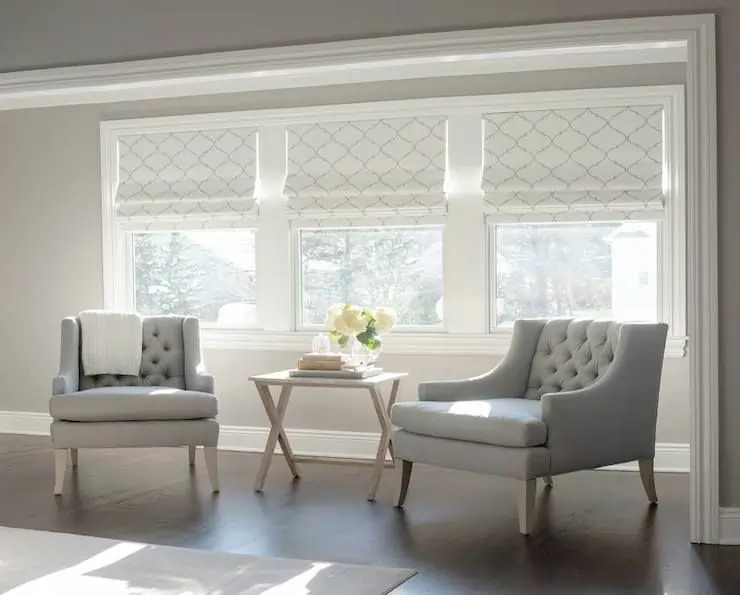There seem to be endless options when it comes to choosing a Transitional window treatment that fits your lighting needs. One option provides total coverage when drawn. The next offers semi-sheer filtering. But what if you want both? What if —we shutter to imagine it—you sometimes want barely any light and at other times want total brightness? You, my friend, need transitional window treatments.
Table of Contents
One of the main concerns while choosing blinds and shades is the ability to filter light to your liking. They don’t exist to just sit there and look pretty. You want your window treatments to look good, of course, but if interior decoration was your sole purpose, you would just buy more wall art.
When it comes to window treatments, though, lighting shouldn’t be an either-or decision. Whether you want it completely dark, cozy and dim, warm and softly lit, or bright as can be, you should be able to have these settings and every setting in between. So, if natural light control is your top priority, look toward these effective window treatment hybrids to suit your varied lighting needs.
Transitional Shades
Traditional shade designs are limiting, to an extent. Made of one sheet of material, there’s no way to adjust how much light is filtered while they are closed. You have to accept the initial level of opacity and forever hold your peace.
Transitional shades, on the other hand, offer a range of natural light settings. Made of two layers of material, this design optimizes your ability to tweak a room’s illumination ever so slightly. The front layer is a sheet of fabric that provides shade-level protection, privacy, and filtering. The layer underneath is comprised of slats, offering a wide range of lighting options that typical blinds would supply. Thanks to this dual-layer technology, transitional blinds offer the best of both worlds.
Luminette Blinds
Similar to transitional shades, luminette blinds have two layers for ultimate lighting adjustment. They resemble traditional vertical blinds with their long floor-to-ceiling slats. However, they have a sheer backing to gently filter light while the blinds are turned open.
This style of blinds offers more light control than almost any other style. Highly adaptable, luminette blinds are the dimmer switch of the window treatment world. They can transition a room from warm and cozy to bright and airy. Because of this, they are an ideal option for communal rooms, such as living rooms and kitchens. They are also a reliable choice for new homeowners, who haven’t yet decided on their home’s interior design and desired lighting.
The other benefit of dual-layering is that the sheer liner helps diffuse the light let in by the blinds. This helps prevent those long lines of hard light typically caused by titled blinds. While blinds are open, the light disperses evenly through the room.
Pirouette Shades
Another hybrid worth mentioning is the pirouette shade. In contrast to other shades that are made from one large sheet of material, pirouette shades are made of multiple slats of shade material. These slats can be tilted to allow various levels of light, much like the slats of blinds.
In fact, pirouette shades are essentially just fabric blinds. This happy medium between shades and blinds provides as much flexibility as traditional wood or aluminum blinds. However, when closed, they have a soft finish that’s characteristic of traditional shades.
Layering the Basics
If you’re seeking a more versatile window treatment but don’t want to replace your existing blinds and shades, you can also consider several layering options.
Classic blinds can be layered above a semi-sheer lining for an effect similar to that of transitional blinds. You can keep the flexibility you have with your current blinds, but the backing provides a cozy filtered glow while the blinds are tilted open. By installing both blinds and curtains, you’ll reap the benefits of both designs.
You can also layer curtains over blinds or cellular shades. Curtains come in the greatest variety of fabrics, allowing you to tailor your level of exposure even better than premade window treatments. Choose nearly opaque drapes to maximize coverage. Or choose a semi-sheer fabric to give the room a light, airy feel.
The key to choosing the most versatile window treatments is to embrace layers. Think beyond wood blinds and Roman shades. The world of window treatments has expanded beyond the basics. Now, it offers a host of hybrid blinds and shades to grant homeowners maximum adaptability.











